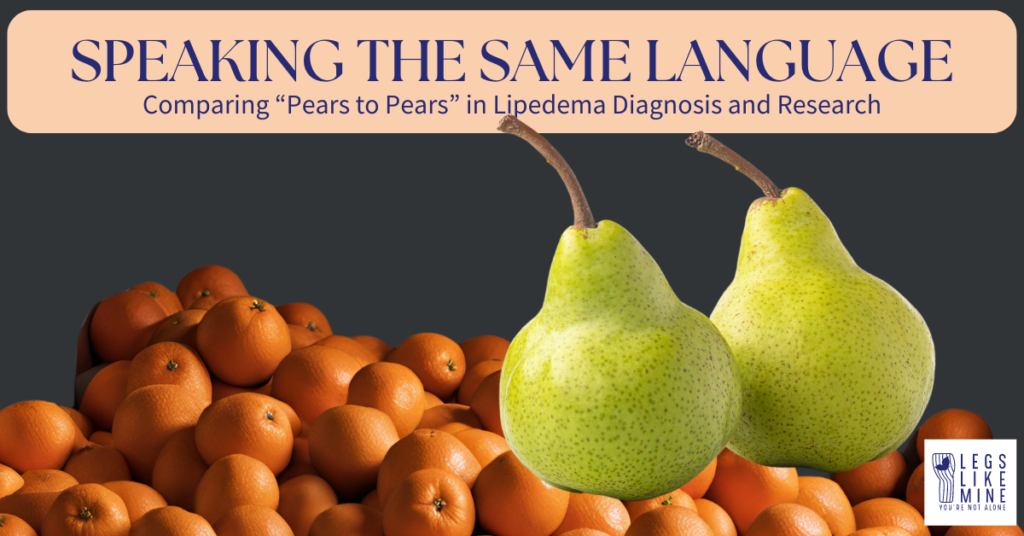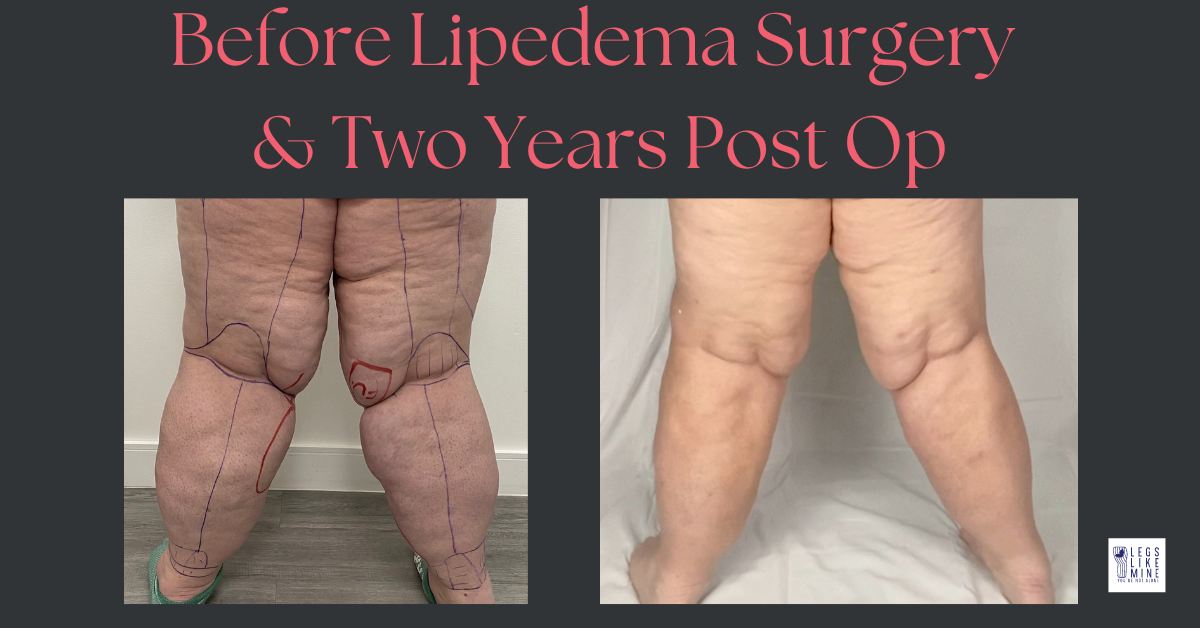Hi friends!
More work is happening to get to a full research environment to find proper treatments and lead to a cure for lipedema. I’m going to share with you two documents that are super important, and emphasize that the two organizations that wrote these documents are naturally complementing each other’s work with the publication of these docs. It’s a beautiful thing.
The Lipedema Foundation is leading the way by the publishing of their Research Roadmap. The Lipedema Research Roadmap is planned strategically and, “recommends action to grow and strengthen research through six objectives:
- Create an environment conductive to high quality research
- Develop a standard lexicon and best practices
- Develop diagnostic and biomarker tools
- Characterize biology of the disease
- Develop treatments, and
- Cultivate greater epidemiology understanding”
The next document is a recently published paper by Keith et al. titled “A Proposed Framework for Research Case Definitions of Lipedema” is a significant milestone for the lipedema community. It addresses a crucial need identified in Objective 2 of the Lipedema Foundation’s Research Roadmap – developing common case reporting and control definitions for lipedema research.
Importance of Standardized Case Definitions
Lipedema is a chronic adipose tissue disorder that has long suffered from a lack of awareness and standardized diagnostic criteria. Without a universally accepted case definition, research studies have used varying inclusion criteria, making it challenging to compare findings and build a robust evidence base. This inconsistency has hindered progress in understanding the disease mechanisms, natural history, and potential treatments.
The Proposed Framework
Keith et al.’s paper presents a comprehensive framework for establishing research case definitions of lipedema in adult women. The framework is based on a thorough review and synthesis of the existing literature, identifying the most frequently agreed-upon characteristics of lipedema. The proposed framework includes five “agreed-upon” characteristics that should be included in any research case definition:
- Female sex
- Pain and/or heightened sensitivity (current or historical)
- Disproportionate distribution of adipose tissue
- Skin/tissue changes
- Non-responsiveness to diet
Additionally, the framework provides guidance on incorporating “less substantiated” characteristics, such as wrist/ankle cuffing, non-pitting edema, and onset/exacerbation with hormonal events, as additional evidence.
Standardization and Collaboration
Have the Lipedema Foundation and other organizations adopted this proposed framework yet? I actually don’t know. Has anyone else proposed a framework for the same thing? I also do not know. I invite folks involved to respond here to give us status.
By adopting this framework, researchers can ensure consistency in participant selection criteria, enabling more reliable comparisons across studies and facilitating the aggregation of evidence through systematic reviews and meta-analyses. This standardization is crucial for advancing our understanding of lipedema and developing effective treatments. Furthermore, the framework encourages collaboration among researchers by providing a common language and set of criteria for defining lipedema in research settings. This collaboration is essential for accelerating progress and maximizing the impact of limited resources in this underserved area of study.
Alignment with the Research Roadmap
The development of this framework directly aligns with the Lipedema Foundation’s Research Roadmap, which emphasizes the need for common case reporting and control definitions. By addressing this strategic recommendation, the paper by Keith et al. represents a significant step forward in the collective effort to advance lipedema research and improve patient care. In conclusion, the proposed framework for research case definitions of lipedema is a valuable contribution to the lipedema community. It provides a much-needed standardization tool that can facilitate collaboration, enable more robust research, and ultimately lead to a better understanding and management of this complex condition.
This was Technical – But Why Does this Matter to Patients?
The paper proposes a standardized way to define and diagnose lipedema for research studies. This is important because without an agreed-upon definition, different studies have used different criteria to identify lipedema patients, making it hard to compare and combine the results. Basically, everyone doing research and diagnosing needs to be doing an apples-to-apples (“Pears to Pears” – get it?) comparison, speaking the same language, if that makes sense. Having a standardized definition allows researchers to properly identify lipedema patients and combine data across different studies. This should help advance our understanding and treatment of lipedema, so patient lives can be changed for the better.
Sources:
Lipedema Foundation. Lipedema Research Roadmap 2023. Lipedema+Research+Roadmap+2023.10.03-Web+(5).pdf (squarespace.com)
Leslyn Keith, Catherine Seo, Monika M. Wahi, Siobhan Huggins, Matthew Carmody, Gabriele Faerber, Isabel Forner-Cordero, Sandro Michelini, Stefan Rapprich, and Stanley G. Rockson. Proposed Framework for Research Case Definitions of Lipedema. Lymphatic Research and Biology.










